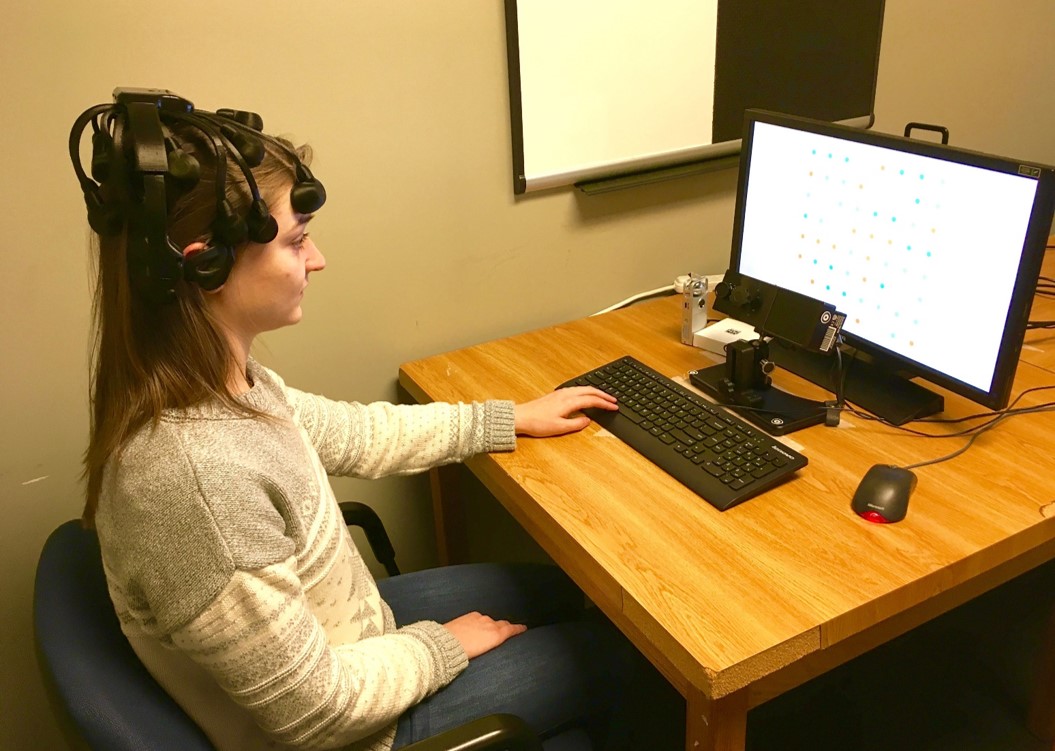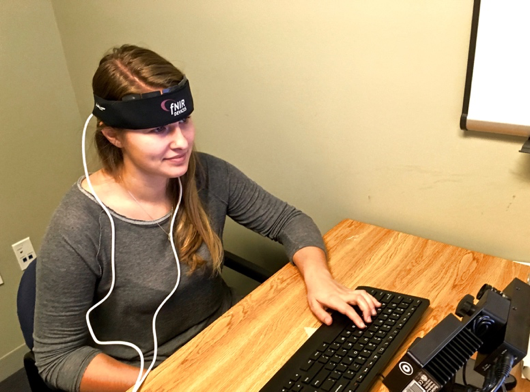 Location: Ballroom C+D+E
Location: Ballroom C+D+E
This is a roundtable in the Cyberlearning 2017 Roundtable session.
Neurocognitive Measures of Implicit Learning
Ibrahim Dahlstrom-Hakki

The potential for the use of neurocognitive instruments to better understand learning is well recognized but the practical barriers to their effective deployment in natural learning settings remains significant. In this session, I will discuss with attendees ways in which relatively cost-effective and portable neurocognitive devices including eye tracking, EEG, and fNIRS can be used to measure different aspects of learning. These measures can be used to provide evidence of effective deployment of attention, to measure implicit responses to learning outcomes inconsistent with internal predictions, and to measure the impact of feedback. Both practical and theoretical considerations for the use of these measures will be discussed.
Project: Homepage, NSF Award #1417456 – Revealing the Invisible: Data-Intensive Research Using Cognitive, Psychological, and Physiological Measures to Optimize STEM Learning
Studying the impact of affect on learning using neuroscientific and physiological measurements
Cyrus Shaoul

By applying cutting-edge cognitive neuroscience research techniques to the problems of education, it may be possible to develop better measures of learning and assessment. In particular, the interaction of affect and learning processes is fertile area of future research. With the cost and complexity of neuroimaging devices becoming more reasonable, it is time for researchers to consider collecting co-registered bio-physiological data and behavioral data. When looking at affect, it is crucial to integrate multiple data sources (ECG, EDA, EMG, respiration, fNIRS, EEG, and eye-tracking). What kinds of experimental designs are most likely to answer our research questions? What technical challenges arise when data from multiple sources must be synchronized with millisecond accurracy? What kinds of data preparation and statistical analyses are required? This round table will be a place to discuss these issues, learn about what is currently being done in our lab, and share best practices.
We Know More than We Can Tell: Behavior-Based Measurement of Implicit Knowledge
Jodi Asbell-Clarke
This Full Design and Development project for the Implementation Research Strand of DRK12 is studying the educational impact of the re-release of the award-winning educational computer game: The Logical Journey of the Zoombinis. In the 1990s, Zoombinis was a popular computer game for home and school focusing on computational thinking (CT) and TERC has now re-developed the game as a tablet version, much to the delight of an enthusiastic audience of educators and general public. This re-development is also enabling researchers to infuse the game with data logging to watch how players build implicit (tacit or unexpressed) knowledge about CT. The Zoombinis implementation research study uses educational data mining methods to analyze the data logs to study implicit game-based learning of CT. The research include surveys, observations, and case studies to understand how that implicit learning can be leveraged by educators to improve explicit (expressed or formalized) learning of CT and how a popular commercial product like Zoombinis can be used for high impact and equitable improvement of learning in the classroom.
Project: Homepage, NSF Award #1502882 – Zoombinis Implementation Research
